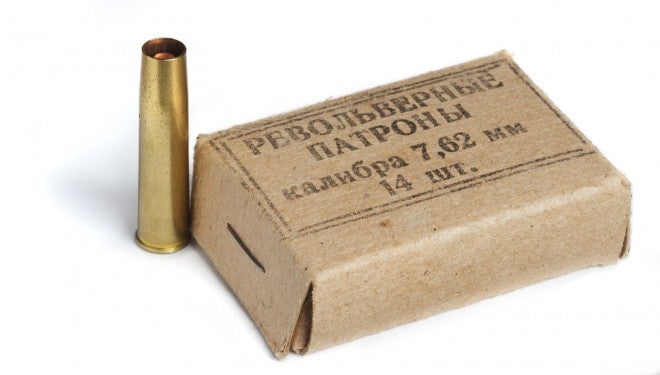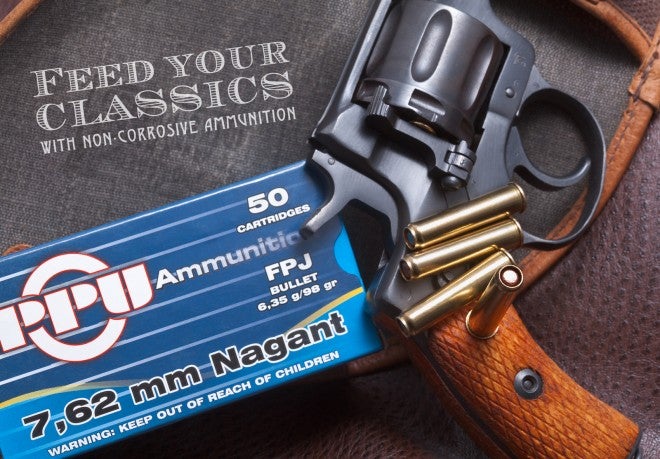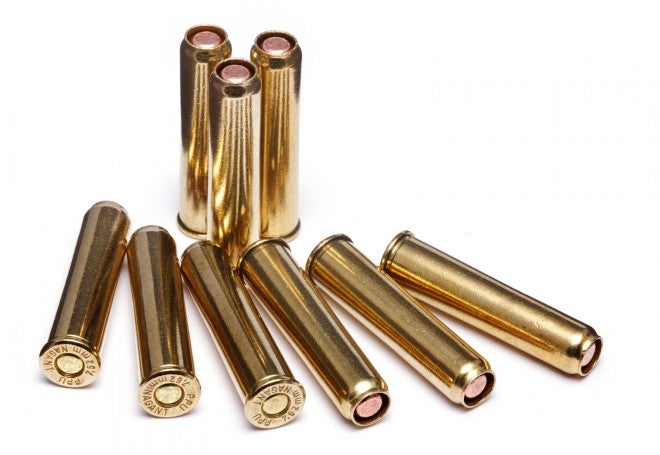Nagant Revolver in Serious Use
Oleg Volk 08.05.14

The 1895 Nagant revolver is well known in the US as cheap surplus gun (available for a time for under $100) with questionable ammunition availability. Many thousands were sold in the past twenty years and still sit in gun cabinets as amusing plinkers. Can they be more than historic curiosities?
The main feature of the Nagant is the “gas seal” effected by the forward movement of the entire cylinder on cocking. The mouth of elongated cartridge case would actually enter the forcing cone and expand on firing. That eliminated the cylinder gap flash (incidentally allowing effective sound suppression) for slightly higher velocity and increased shooter comfort. It also improved accuracy by self-centering the bullets relative to the barrel.
Unfortunately, the main problem with this revolver has also long been its unique ammunition. Loaded with a deeply recessed bullet, is was typically made with non-reloadable Berdan brass. Surplus ammo availability was limited mainly to the low-power target loads shown above. They were corrosive and only moderately consistent. The original military loads used approximately 100gr bullets at about 1100fps. Some surplus loads go up to 109gr and nearly 1300fps, though that may be from improper storage and resulting overpressure. Target loads ranged from 700fps to about 650fps. For a long time, the only available non-corrosive load was Fiocchi at about $30 per 50 rounds. More recently, Prvi Partisan (PPU) (sometimes branded Hot Shot) became available at about $22 per 50.
One more option is available: a conversion cylinder for the more common 32ACP. While functional, it loses most of the advantages of the unique Nagant design and is recommended only if proper ammunition is completely unavailable. Shorter 32ACP cases do not provide gas seal but do provide very considerable freebore in the long cylinders, both ruining accuracy.
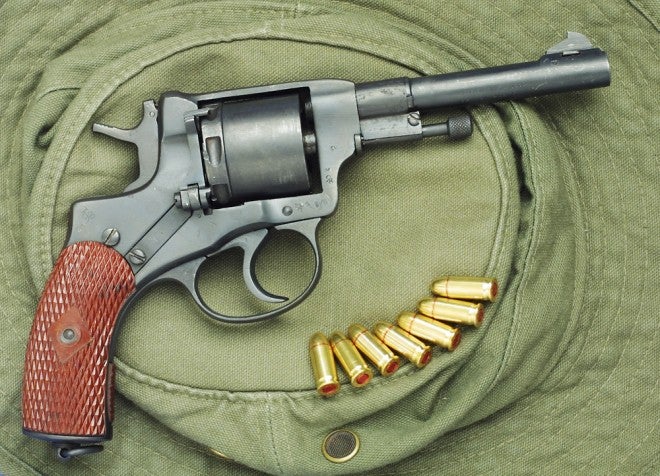
At the time of its introduction into the Russian army service in the 1890s, the Belgian-designed Nagant revolver was at once a technological break-through and a quaint reminder of the old thinking. The quaint feature was the single leading through a gate combined with sequential extraction of spent casings. In retrospect, it actually made a lot of sense. The original cartridge was loaded with black powder, and individual extraction was more reliable than simultaneous. The swing-out ejector rod was definitely a bad design, slow in use and unnecessary given the option of fixed ejector rod similar to the American Colt SAA revolver. Fortunately, it turned out that the ejector rod was seldom necessary; Nagant chambers stay cleaner than those of any other revolver, and spent empties usually just fall out on their own as the cylinder turns.
So what do we have in the sum? An obsolete design with no full-power ammunition available. Seven available shots are followed by a slow reload. The demands of the mechanical cylinder movement make double action trigger very heavy. Historically, double action was an afterthought in this design, added only to the officers model. And yet the 1895 Nagant remains popular for reasons other than its historic cachet.
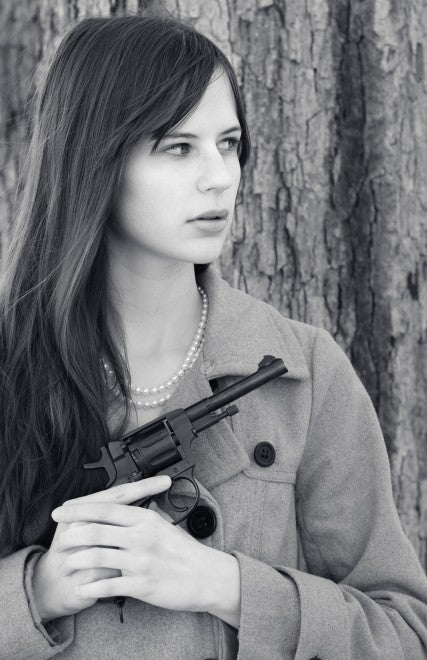
The original sights were regulated for about 25 yards. Slower target ammunition with the same bullet weight as the original increases drop, so the sights are regulated closer to 15 yards with it. Fortunately, the combination of gas seal design providing self-centering as an incidental benefit and the consistency of newly manufactured ammunition combine to provide excellent practical accuracy. At 7 yards, I have no trouble shooting all seven shots so closely that the holes touch, producing groups of around one inch. That’s been true of the peacetime 1930s revolvers and also of the rough and ready 1943 samples. While even the single action trigger is heavier than usual for the US revolvers, it’s crisp and provides a margin of safety for shooting with gloved hands.
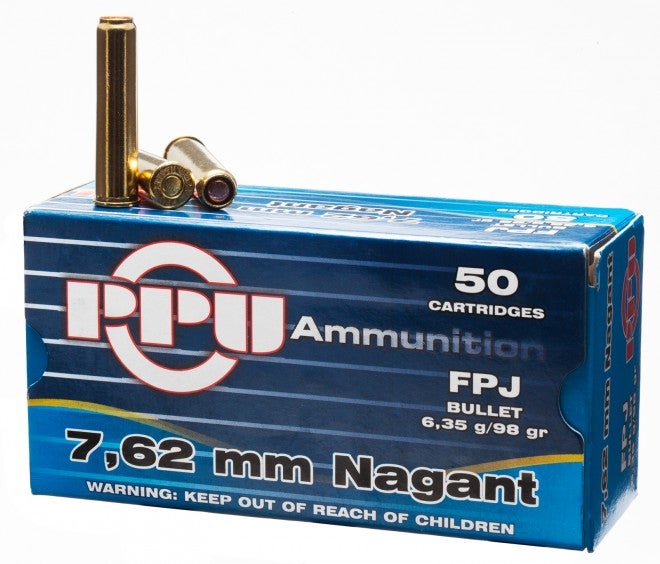
The other benefit of the gas seal is greatly reduced noise levels. The pressure at the cylinder to barrel gap is much higher than at the muzzle, so revolvers are louder than semi-auto pistols using the same cartridge. The Nagant revolver does away with that gap. Heavily subsonic loads with only the muzzle blast to produce the noise are quieter to the shooter than even the comparable 32S&W Long.
What we have at present is a very competent revolver for hunting small game. While slower in use than swing-out models, the M.1895 is far, far more accurate than any of the inexpensive competitors in the more modern .32 calibers. Between low noise and recoil, very good accuracy and finally available non-corrosive ammunition, it is a reasonable choice for rabbit-sized game–headshots are practical to about 15 yards and body shot came be taken out to about 30 yards without excessive meat damage.
